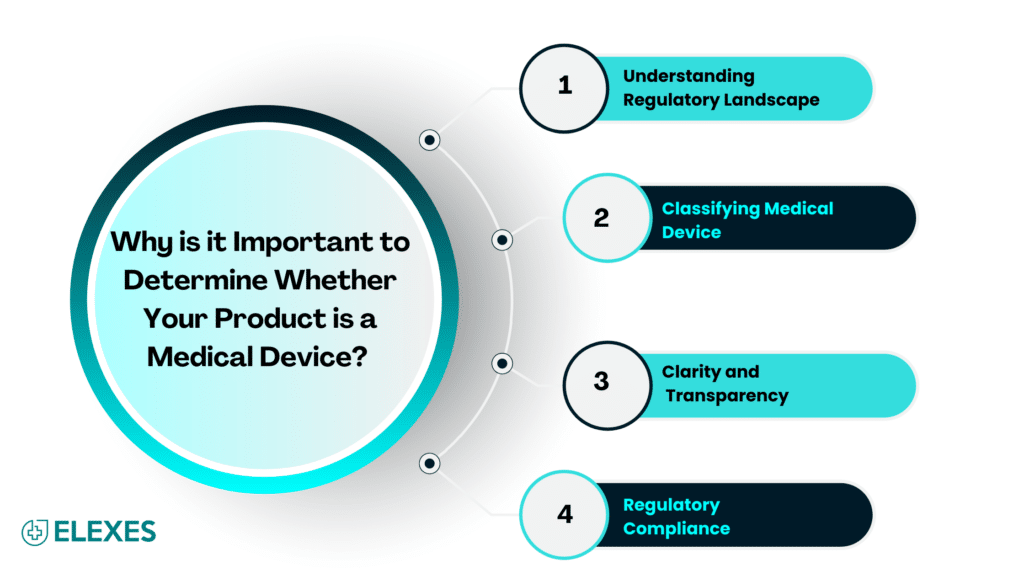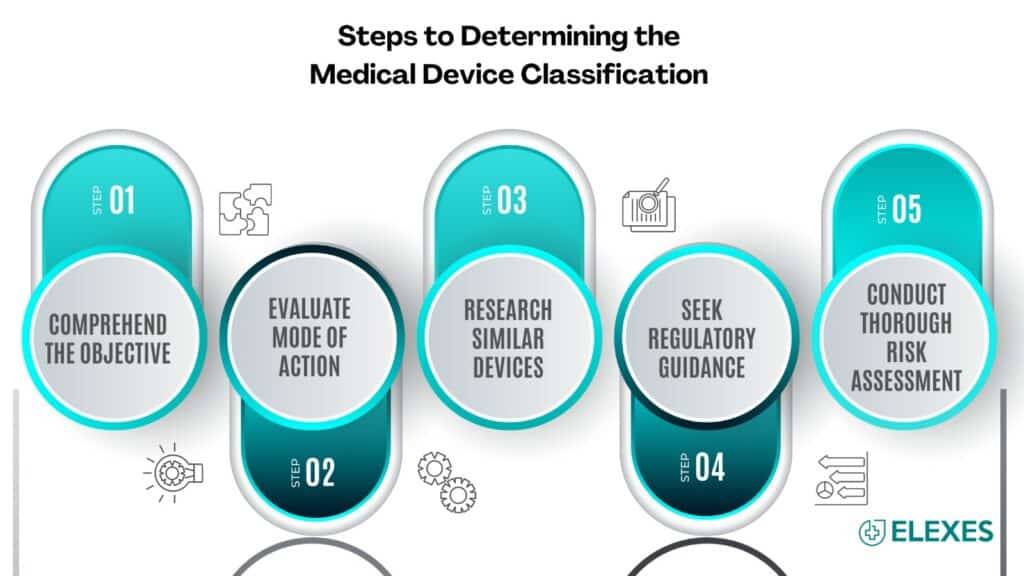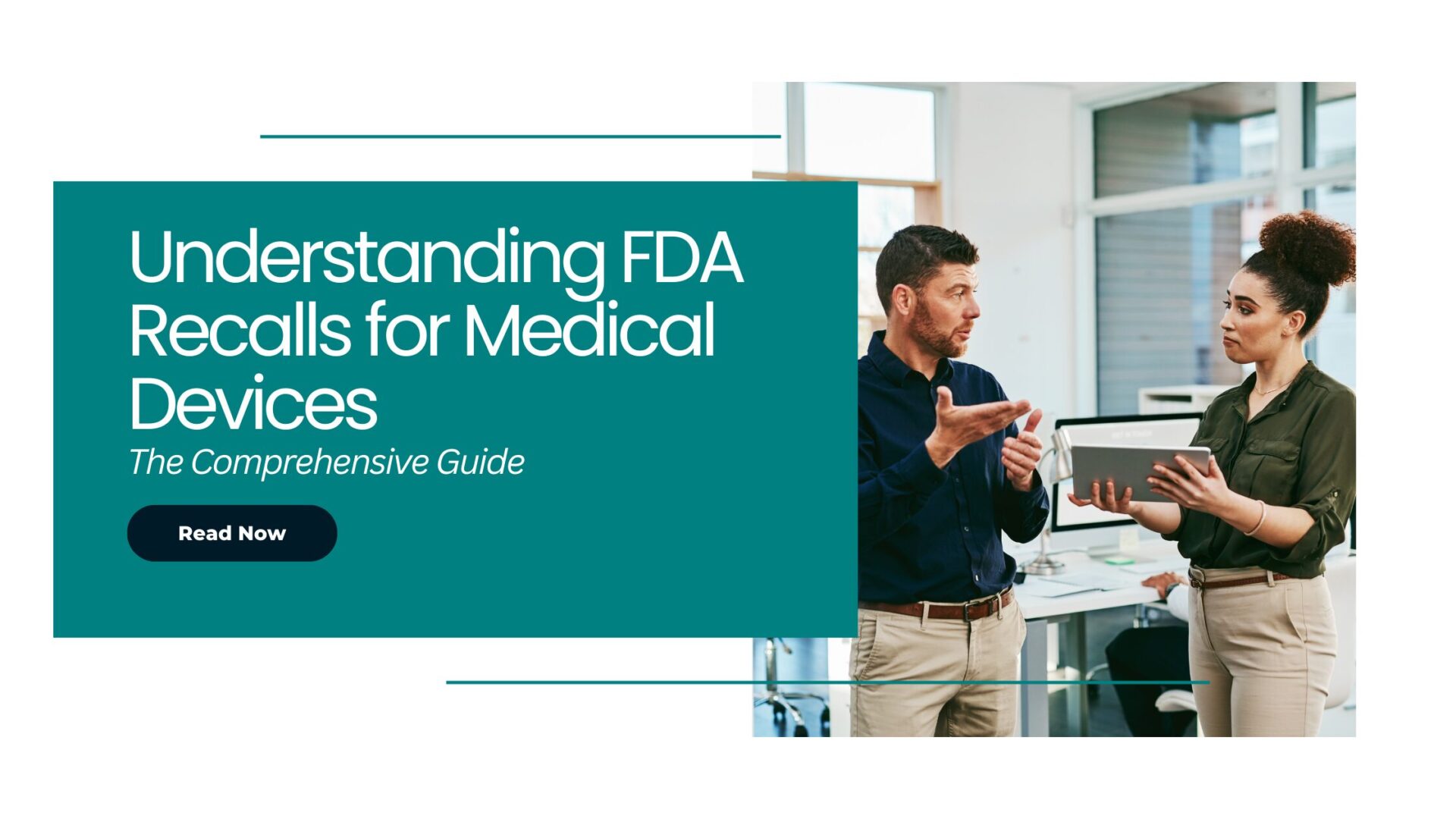Picture yourself working in the medical industry, but your focus is not specifically on medical devices.
Your focus is on developing a product that seeks to enhance overall well-being and optimise the management of a specific health condition or procedure, effectively addressing the unique difficulties experienced by a particular segment of the population.
As you continue to enhance and refine your product, often based on user feedback or market research, the product’s nature evolves.
Initially, the product that was only meant to support general well-being and health, enters into the realm of a medical device.
At this stage, it becomes crucial to possess knowledge of medical device classification and comprehend the relevant medical device regulations that must be taken into account.
Whether you are developing a new product or are seeking clarity for an existing one, by knowing what is a medical device and understanding the medical device classification framework, you can proactively navigate the complex landscape of medical device regulation and ensure compliance with the appropriate standards at all times.
What is a Medical Device?
The first step towards understanding, if your product should attain a medical device classification, is to know what is a medical device. However, figuring out what qualifies as a medical device and what not can be really tough. And this is because medical device is really a broad term that encompasses a wide range of:
or other similar articles used for medical purposes
A medical device can vary significantly in complexity and function. It can be as simple as a tongue depressor or as complex as an advanced robotic surgical system. Some common examples include
When identifying what is and what is not a medical device, one distinction is very clear –
While a drug is primarily chemical based, a medical device is a physical entity that serves a specific medical purpose.
Where it can be really confusing?
Just like many other wellness products, a medical device is also intended to improve patient outcomes, enhance the quality of life, and facilitate the work of healthcare professionals.

Medical Device at Home
Just like how a home gardener uses gardening tools to nurture and maintain plants, a home medical device assists patients in monitoring and managing their health.
A home-use medical device also referred to as an OTC medical device is simple and user-friendly, allowing patients to keep track of vital health parameters or perform specific health-related tasks independently.
For instance, a glucose meter is a medical device that helps individuals with diabetes in monitoring their blood sugar levels, much like how a DIY home repair kit equips you with the necessary tools to fix minor issues around your house.
Medical Devices For Healthcare Professionals
A medical device can be likened to a precision instrument wielded by a skilled artisan to delicately craft or restore a masterpiece.
Just as a jeweller utilizes specialized tools to carefully shape and polish precious gemstones, medical devices are meticulously designed instruments utilized by healthcare professionals to provide precise and targeted healthcare services.
Consider, for instance, a surgeon’s scalpel, which functions as a refined instrument used with expert precision to make precise incisions during a surgical procedure, comparable to a calligrapher’s pen gracefully crafting intricate strokes on paper. Both tools are wielded with skill and finesse to achieve desired outcomes in their respective domains.
In all these analogies, one major difference is that of regulations. The classification of any product as a medical device has significant implications for its development, manufacturing, labelling, packaging, marketing, and distribution processes. While we are talking about medical device regulations, let’s take a minute to look at what is the official definition of a medical device as defined by the US Food and Drug Administration (FDA).
Official FDA Definition of a Medical Device
As per the U.S. Food and Drug Administration (FDA), a medical device is defined as:
An instrument, apparatus, implement, machine, contrivance, implant, in vitro reagent, or similar article, including its components, parts, or accessories. This product is either officially recognized in the National Formulary, the United States Pharmacopoeia, or any of their supplements, and is intended for various medical purposes.
To be precise, any product is a medical device if its intended use meets the aforementioned definition of the FDA.
Why determining if you meet medical device criteria is important? (Need for Classification)

Determining if your product meets the criteria of a medical device is crucial for several reasons, such as the following:
Understanding Regulatory Landscape:
If your product is a medical device several regulations will be applicable to it. Knowing this classification early on, helps you understand the specific requirements that apply to your product. When you identify your product to be a medical device at the right time, you can steer through the intricate regulations effectively, ensuring compliance with applicable laws, regulations, and standards.
Right classification for the Medical Device:
Being aware of the medical device classification of your product allows you to access appropriate regulatory pathways for market approval. Different classes of medical devices have varying levels of regulatory scrutiny and requirements.
By determining the classification of your product, you can follow the correct regulatory process, whether it involves pre-market clearance, approval, or post-market surveillance.

Clarity and Transparency:
Understanding if your product is a medical device provides clarity and transparency to stakeholders, such as healthcare professionals, patients, regulators, and investors. It helps them understand the intended use, potential risks, and benefits associated with your product.
Proper classification allows for effective communication and appropriate decision-making regarding the use, purchase, reimbursement, and funds needed for the development of your device.
Regulatory Compliance:
Knowing if your product is a medical device appropriately ensures regulatory compliance, facilitates market access, and promotes patient safety. This clarity helps put in place a clear framework for the development, manufacturing, and commercialization of your product, leading to its successful and responsible integration within the healthcare ecosystem.
Challenges with Classifying a Product as a Medical Device

⦿ Ambiguity in interpretation:
Figuring out if a product is a medical device can be tricky due to different interpretations of a given criteria.
⦿ Rapid Technological Advancements:
New and innovative technologies that have unique features or modes of action make it hard to classify products as medical devices or as something else.
⦿ Overlapping Regulatory Requirements:
Different regions have their own rules, so navigating multiple regulatory frameworks and aligning medical device classification is a hassle. Introducing the same product into a new market may lead to a medical device classification of that product.
⦿ Evolving Regulatory Landscape:
Medical device regulations keep changing, so keeping up with the latest guidelines and requirements is an ongoing challenge.
⦿ Different target users and use environment:
Change in target users like individuals having underlying conditions, etc, or change in the use environment, like a clinic vs. home can result in a product being classified as a medical device.
⦿ Classification Determining Market Access:
The medical device classification affects how long and what kind of funds it takes to get a product on the market, being classified as a medical device a big deal.
⦿ Misbranding:
Certain products get misbranded, as it is difficult to know whether or not they are a medical devices.
Such products include:
→ Software Products
Web and mobile-based software products challenge our expectations when it comes to medical device classification. Unlike traditional devices, they don’t have physical hardware. However, a distinct category is “software as a medical device,” which falls under the medical device classification.
As a result, these software-based medical devices must adhere to specific regulations tailored to their unique nature. So, even though they don’t fit the typical medical device mould, these software products can still have their own unique set of rules to comply with and would be classified as a medical devices.
→ Combination Products:
Combination products pose classification difficulties as they merge features of both medical devices and drugs. Examples of these are a transdermal patch designed to deliver medication through the skin, a combination of drug substances, and adhesive materials that adhere to the skin.
→ Borderline Products:
Borderline products pose classification challenges since they lie at the intersection of medical device and drug classifications. For instance, beta-blockers, classified as medications, and topical surgical adhesives, classified as devices, are examples of products that fall into this category.
→ General Wellness Products:
Several products are designed to encourage a healthy lifestyle but do not fall under the FDA’s oversight. These low-risk products fall under the general wellness category, and the medical device regulations do not apply to them.
For example, sleep-tracking devices or apps that monitor sleep patterns and provide insights for better sleep hygiene would be classified as general wellness due to their minimal risk.
To address these challenges, it’s important to understand the medical device classification framework, so let’s look closer at the FDA’s medical device classification system.
Medical Device Classification in the US

The FDA medical device classification system for medical devices is like a sorting mechanism that groups devices into different categories based on the level of risk they pose. It helps determine how strictly these devices are regulated and what rules they need to follow. Let’s break down the different classes and their corresponding regulations.
Class I - Low Risk, General Controls, Mostly Exempt
Class I are those devices that are considered low-risk, such as tongue depressors or bandages. These devices have to meet the general controls, for example, good manufacturing practices and proper labelling, but they don’t require as much oversight as per the medical device regulations. These devices are mostly exempt from the 510(k) requirements, however, some of these devices do need to comply with 510(k) requirements before placing the device in the US market.
Class II - Medium Risk, General Controls & Special Controls, Rarely Exempt
Class II devices carry a moderate level of risk and are subject to more stringent medical device regulations. Examples include digital thermometers or bone fixation devices. These devices have to comply with special controls, which can involve meeting specific performance standards or keeping an eye on how these devices perform once they’re on the market. Most of these devices need to undergo the 510(k) clearance, while some get into the Class II medical device classification after a down classification through the DeNovo mechanism.
Class III - Highest Risk, General Controls and Premarket Approval (PMA), Never Exempt
These devices are the highest-risk ones, like implantable pacemakers or heart valves. Such devices go through the most rigorous review process because they’re critical for sustaining or supporting life. If any of your products fall in this medical device classification then you have to submit a Pre-Market Approval (PMA) application which should include clinical data, to prove that these devices are safe and effective before they can be sold. As per the medical device regulations, none of these devices are exempt and need approval before they can be commercially distributed within the United States.
The FDA continuously updates its medical device classification, placing certain devices in an exempt category while establishing new regulations for products that don’t fit within the existing framework. This dynamic environment necessitates staying up-to-date with medical device regulations and the medical device classification framework.
Recommendations on Determining the Medical Device Classification

While medical device classification continues to be challenging, some of the following recommendations can certainly help you make informed choices
Step 1: Verify if the definition matches:
Assess if your product aligns with the official definition of a medical device. This will aid in determining whether your product falls under the classification of a medical device or not
Step 2: Comprehend the Objective:
Clearly articulate the intended purpose of your device. Assess whether it is intended for diagnosis, treatment, monitoring, or prevention of diseases or conditions in humans.
Step 3: Evaluate Mode of Action:
Analyze how your device achieves its intended purpose. Determine if it primarily acts through physical or mechanical means, or if it involves chemical or biological interactions.
Step 4: Research Similar Devices:
Study existing devices in the market that have similar intended uses or modes of action. This can provide insights into their classification and regulatory requirements, helping you make informed decisions for your device.
Step 5: Seek Regulatory Guidance:
Engage with regulatory experts to consult and seek guidance early on to ensure a smooth and accurate medical device classification in accordance with applicable medical device regulations.
Step 6: Conduct Thorough Risk Assessment:
Assess the potential risks associated with your device, considering factors such as duration of use, invasiveness, and potential harm to patients. This evaluation will help determine the appropriate level of regulatory scrutiny.
Step 7: Stay Updated:
Keep abreast of changes and updates in the regulatory landscape. Stay updated on regulatory guidelines, standards, and any emerging developments that could influence the medical device classification.
Conclusion
While there exist many guidelines on identifying if a product is a medical device and information on medical device classification, it is your responsibility to ensure that the identification and classification are apt and their relevance is maintained in spite of changes in the medical device regulations and the medical device classification framework.
Throughout the process, it is important to keep comprehensive documentation of the factors considered, rationale, and supporting evidence behind your product’s identification as a medical device or not, and the subsequent medical device classification.
Such documentation will be valuable in case of a potential FDA inspection. Incorrectly classifying a product as a general wellness or other product kinds while it should have been classified as a medical device or getting the medical device classification wrong can result in non-compliance, delays, recalls, or penalties that harm a company’s reputation and finances.
Getting the classification right is vital for ensuring compliance, finding the right regulatory pathway, and ultimately bringing your product to market. It shapes how you communicate with stakeholders, gain market access, and prioritize patient safety.
If you are still determining if your product is a medical device, you can book an appointment today with our team and we will help you through it.





















